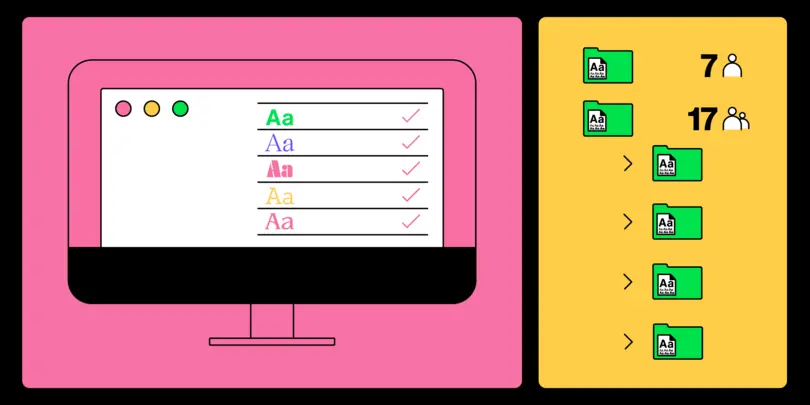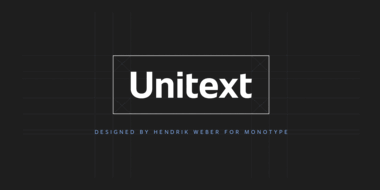Why Monotype Fonts makes financial sense for creative teams.
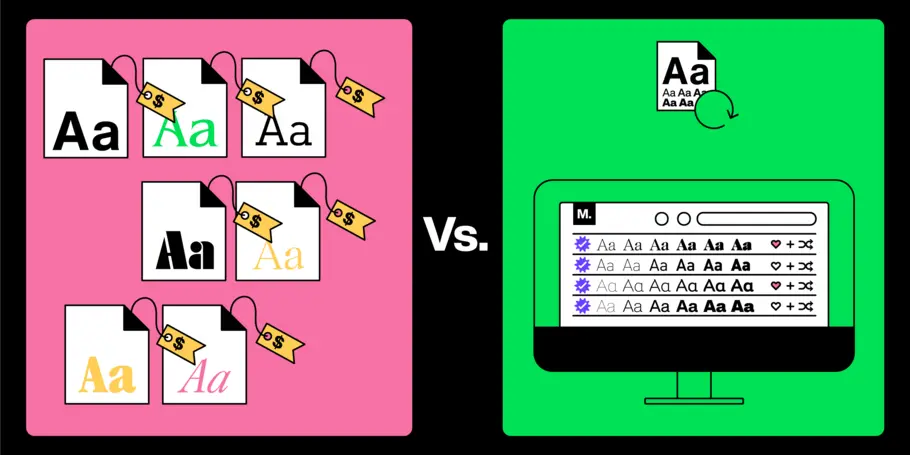
Depending on how you currently manage your fonts, paying for a Monotype Fonts subscription can be an upfront investment that provides a substantial return. But as with anything that requires a yearly fee, it’s natural to wonder whether spending money on a font management tool makes financial sense to your creative team.
This article explores how a Monotype Fonts subscription can optimize how your team uses fonts, save your team a lot of time and effort (and money), and shield your organization from costly mishaps.
But first — does a Monotype Fonts subscription make sense for your team?
Will a Monotype Fonts subscription save your team money?
To determine whether your team needs a font management tool/library like Monotype Fonts, you must assess how your creative team currently uses fonts in their designs. Ask yourself the following questions to determine whether your organization is losing money or is exposed to potential copyright issues due to existing font management practices.
How much time do your creatives spend looking for missing fonts?
Creatives spend roughly 8 hours weekly on “nuisance” tasks like tracking down and manually installing missing fonts.
During a project, design files get shared among designers and other creative collaborators. Designers often receive files containing fonts that aren’t available on their machines. They would then have to find out who originally purchased the font, figure out how they can get hold of it, and track down where it’s filed. Sometimes, they would have to wait for a colleague to share the file with them. This results in a bottleneck that becomes especially palpable every time designers chase a busy coworker who has other priorities, is on vacation, has left the company, or simply takes a while to respond.
That’s if the designer even notices the missing font. Some design programs substitute missing fonts with another, leading to another set of problems down the line — at best, wasting time redoing work with the correct font, at worst, publishing your design with the wrong font.
Every hour a designer spends looking for missing font files or re-doing designs because of font-related mistakes is an hour they’re not spending on valuable work. According to data from Indeed, here are the average hourly base salary for graphic designers in the following cities:
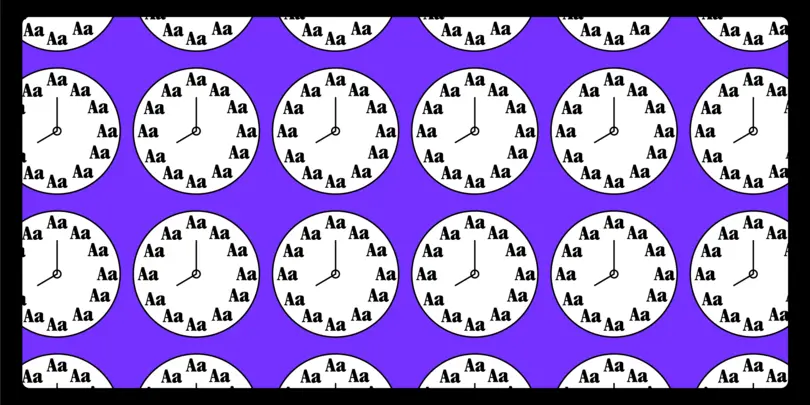
|
London |
£14.88 |
|
New York |
$25.51 |
|
Austin |
$22.90 |
|
Los Angeles |
$24.19 |
To put it in perspective, an agency in New York could be losing as much as $204 a week on font-related nuisance tasks. How much do your designers earn per hour?
If you think you’re losing too much time and money on missing fonts, it might be time to consider a solution that automates finding and installing fonts.
What does your font acquisition process look like?
Without a subscription, an organization typically licenses fonts one by one as needed — a process that requires a purchasing workflow. Depending on the size of your organization, this workflow will involve at least a couple of people.
Even for the most efficient team, workflows such as this make room for potential delays (e.g., waiting for the purchasing team to approve the fonts creatives want to use or waiting for legal to check a stack of licensing agreements before green-lighting a production design). This is especially relevant for global teams with members scattered across multiple time zones. After all that, the team will need to keep track of managing licensing documents (more on licensing issues later).
Font acquisition also plays a role in how arduous and costly the prototyping process becomes: If you have to use fonts on your pitches, mockups, and prototypes, you would have to shoulder the cost of the font purchase upfront. That, or copy and paste a screenshot of the font sample to use on the design.
If a client asks you to change the fonts, you’re going to go through the entire purchasing workflow all over again. To get around the hassle, agencies sometimes opt to sacrifice quality by using a copy-pasted, unlicensed version of the font on a design.
If you’re running the risk of missing client deadlines due to unforeseen sourcing delays or risking pitches just so you can use a font for free, you might benefit from a subscription model that allows unlimited prototyping under one license.

How do you keep track of your font licenses?
Keeping track of the usage and licensing agreements associated with all the fonts you use (yes, even free fonts) is a challenge, even for larger brands. Target and Volvo are two of the numerous brands that have been involved in font-related lawsuits. Even Cher herself got a font-related infringement case.
Keeping track of which fonts are licensed for which use cases and who is using your community fonts (and for what) can be a full-time job in itself — especially if you’ve amassed thousands of fonts over the years.
Losing licensing agreements is easy, especially if they’re stored in various places within the company system. Using fonts on projects incongruent with associated licensing contracts is common, especially if everybody has ready access to the library.
A well-tracked font licensing system is your primary defense from potential licensing breaches and the resulting unpaid revisions (if not an outright infringement lawsuit).
Suppose your organization’s font management system does not provide visibility to all the font licenses you’ve secured. In that case, it might be time to switch to a solution where you only have to worry about a single licensing agreement.
Where and how do you find new fonts?
Most agency creatives discover fonts from various platforms, marketplaces, foundries, and libraries. The task often involves endless scrolling and test typing — multiple tabs open, trying to compare each font side-by-side with your design or copy and pasting dodgy screenshots into a design document.
On the other side of the spectrum is limiting your font options to ones found in open-source libraries. The major downside to this option? You look like everybody else. It’s quite difficult to create remarkable designs with fonts that you and every other company in various different industries are already using (Roboto, anyone?)
If your team suffers from analysis paralysis or lackluster options, consider using a vast library of high-quality typefaces, instead of having to spend hours scrolling through hundreds of font options scattered across multiple sites. Consider using a solution that makes it easy to add fonts to your management/filing system. Bonus if your solution has a filter that makes finding fonts easier (like filters, tags, and categories).
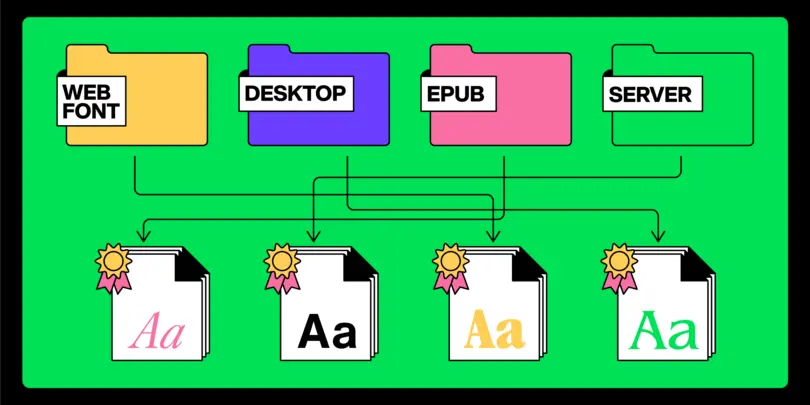
How does your team store and manage fonts?
A font library organized into access-controlled lists and folders is a breeze to use. It’s easier for creatives to find and use the right fonts while giving administrators an overview of who’s accessing which fonts and for which purpose. This protects your team from revising designs because of improper font usage and makes collaboration with outside freelancers and agencies easier.
However, an organized font library can still be a pain to update. As mentioned before, font files are software that gets updated from time to time — someone would need to keep tabs on which fonts have newly available updates and manually upload the font file to the team’s shared drive. This ensures that everyone designs with up-to-date font files, as using outdated ones on projects affects brand consistency.
If your team has no management system, the right fonts are not just difficult to locate; they will be impossible to update. If that’s the case with your team, it might be time to consider a solution that serves as a centralized source for all your fonts, so you can update your font library instantly, with minimal to no effort.
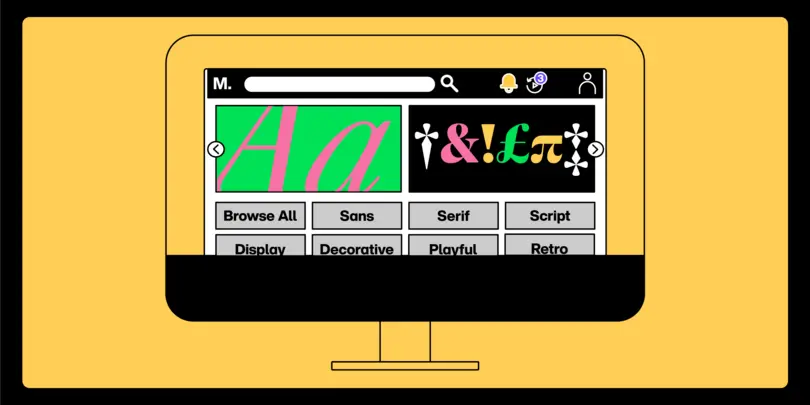
Why a Monotype Fonts subscription makes financial sense
If your team’s existing font management system is so inefficient it costs your organization money (not to mention exposing you to copyright issues), it’s time to switch to a simpler, more useful solution.
Having a Monotype Fonts subscription means:
- Saying goodbye to missing fonts for good. The Monotype Desktop App is designed to save your creatives a lot of time and effort by detecting and supplying all the missing fonts on any design project. This feature works on most design applications like Photoshop, Illustrator, and Figma. The app pulls the fonts not only from your organization’s existing font library, but from Monotype Fonts’ vast library of over 250,000+ fonts. It doesn’t matter if the missing font does not exist in your library, the app will find it for you in seconds.
- Having the most uncomplicated font acquisition process ever. Purchasing a Monotype Fonts subscription means bringing in tens of thousands of high-quality fonts into your library without having to go through a complex sourcing and purchasing process for every single one
- Storing and tracking just one single licensing agreement. That’s it. A single licensing agreement allows for unlimited experimentation in design files, and can cover all your commercial production fonts (according to the plan you choose). So all you need to track is whether your usage stays within your plan’s web page view/impression limits.
- Finding the right font for any project, fast. 250,000 new fonts on top of your existing font library is a lot of fonts, so Monotype Fonts’ powerful search and discovery tools come in handy. You’ll be able to filter by descriptive keywords, specific typographic features, or language support. The best part is that your team will have ready access to the latest releases from some of the world’s most renowned font foundries — no need for endless scrolling on different sites.
- Having an organized, ready-to-use, access-controlled font library. Every creative has access to all the fonts they need, whenever they need it. No bottlenecks and no delays. Administrators can also set access controls, reducing the risk of creatives using the wrong fonts. All the fonts in the Monotype Fonts library are constantly updated, so they’re ready for use. You can also upload your existing library (and all associated licensing) into Monotype Fonts to have one single source of truth for all your fonts.
As your creative team needs fresh fonts for projects and branding campaigns, a Monotype Fonts subscription will be more valuable. Monotype Fonts is constantly being developed to meet users’ needs, and the library is consistently growing.
You’ll benefit from all of this by paying just an upfront subscription fee.
To find which Monotype Fonts plan suits the needs of your team, check out the subscription page
